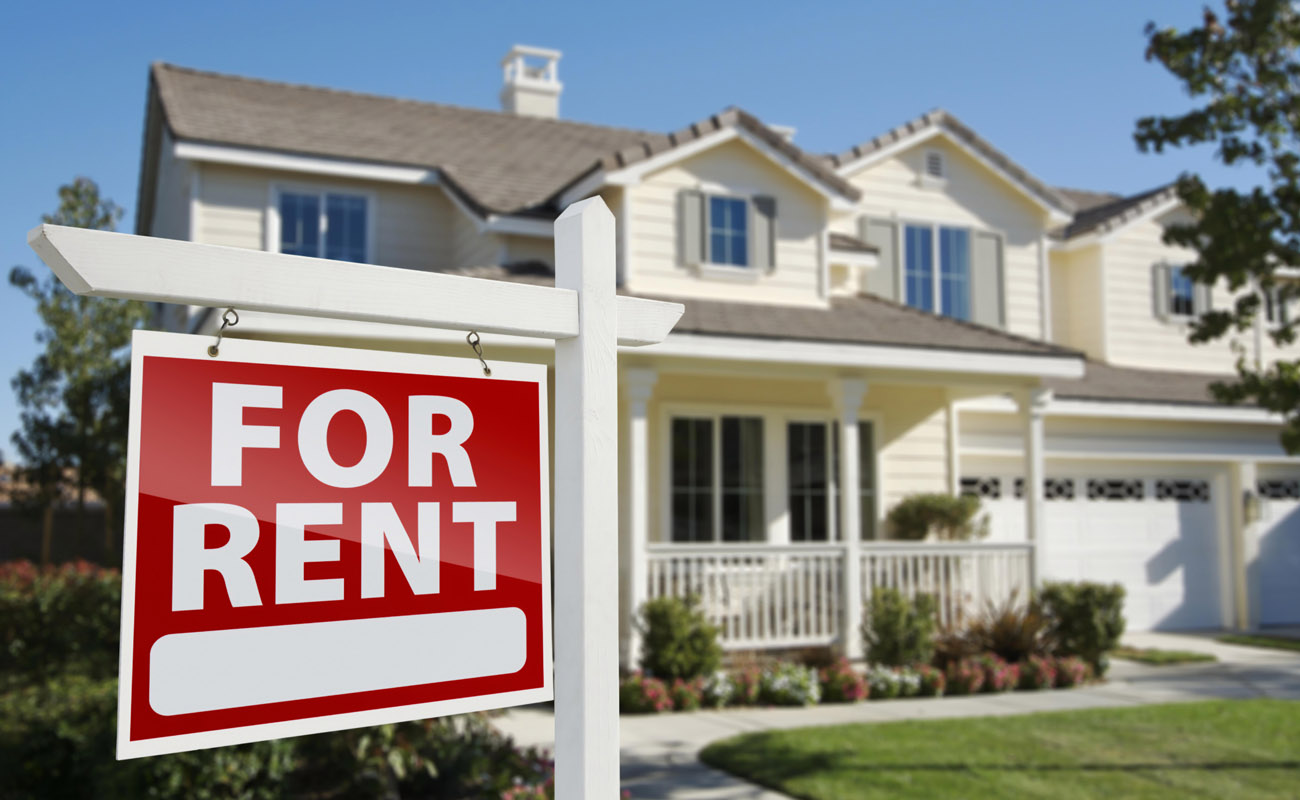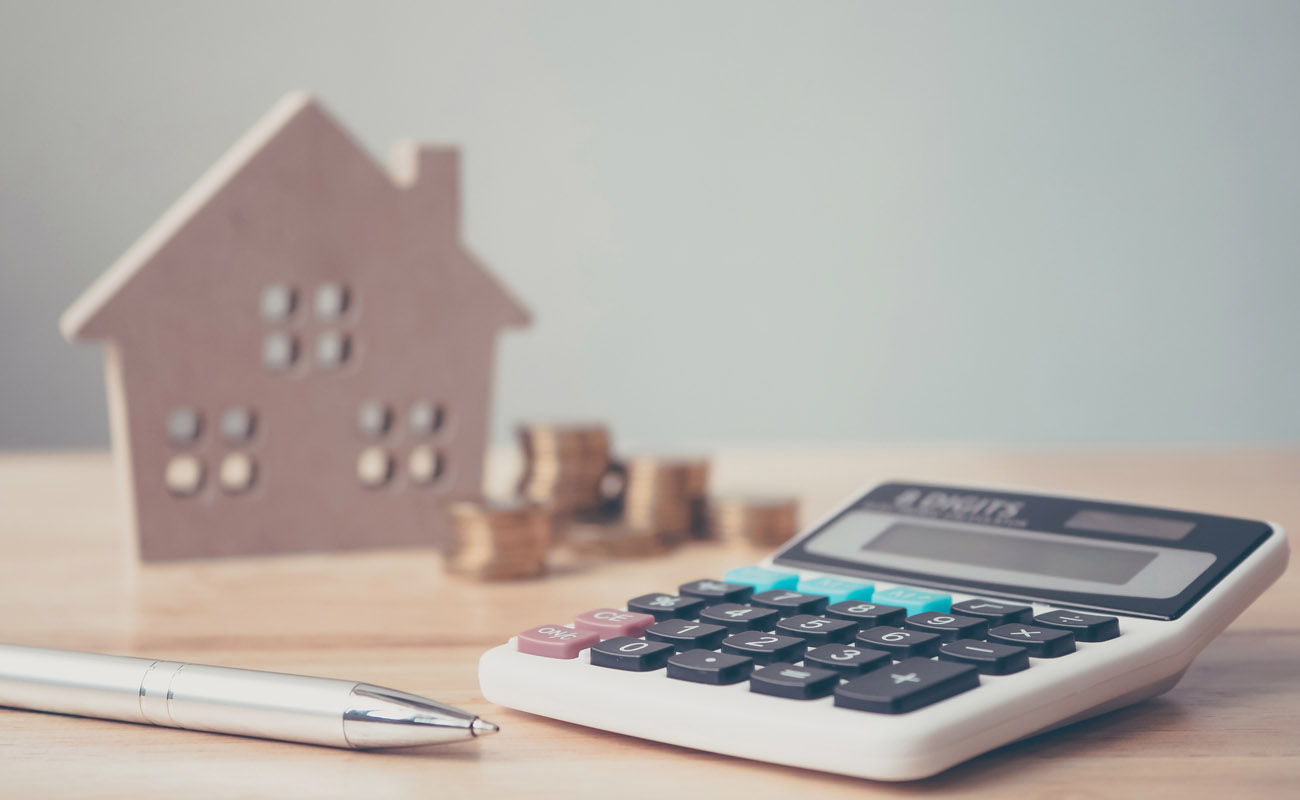Are you considering investing in a particular property? Do you want to compare multiple properties? If so, the following calculator will help you quickly determine the viability of such investments by returning the following factors:
- Capitalization Ratio (CAP)
- Debt Service Coverage Ratio (DSCR)
- Net Operating Income (NOI)
- Net Income Multiplier (NIM)
- Expense Ratio (ER)
- Cash on Cash Return (COC)
We publish current New York mortgage rates in an interactive table which allows you to compare and contrast monthly payments and interest rates for various financing scenarios.
Residential Rental Income Property Cash-flow Analysis
Current New York 30-YR Fixed Mortgage Rates
The following table highlights current New York mortgage rates. By default 30-year purchase loans are displayed. Clicking on the refinance button switches loans to refinance. Other loan adjustment options including price, down payment, home location, credit score, term & ARM options are available for selection in the filters area at the top of the table.
Measuring and Maximizing Real Estate Investment Returns

Few investments are as safe as real estate. Rather than eaten by bills or lost to risks, money paid to mortgages builds equity in a tangible property. Nowhere else is this true than in the U.S., where the 30-year fixed-rate mortgage is the norm. This huge duration buffer puts time and inflation on the side of the property owner.
Owning real estate alone can help you build wealth. But real property has one big disadvantage: it is not a liquid investment. You can’t tap into your own home’s value without selling it or taking out a second mortgage. But if you have many properties, you can rent them out. Occupied rental property generates a predictable cash flow from an otherwise illiquid asset. The properties you own also add to your net worth, bolstering your personal wealth.
Investing in rental real estate can become a vital part of your investment portfolio. Over time, a well-maintained property can provide you with a hefty return with little work.
The Real Property Advantage

Choosing real estate means investing in stability. Real property resists inflation and provides long-term security for many of its investors. In fact, the home is often the biggest single asset homeowners have. Although subject to market cycles, real estate keeps and regains its value over time. The value of real estate is also not tied with the state of the stock market. Real property may continue growing in value even as the markets are bearish.
In the U.S., buying real property also has a plethora of tax advantages. Interest from mortgage payments is an itemized deduction in tax returns. Meanwhile, income gained from rent is not taxable as self-employed income. Owning real estate is often subject to much lower long-term capital gains tax. Finally, property owners are rewarded with tax breaks for reinvesting through 1031 exchanges.
Renting puts your property to work. People pay to occupy the property you own. Once they sign a lease, they provide you with a definite stream of income as long as they meet the rent. Moreover, rental real estate pays for itself in the most literal way. The money generated covers both mortgage payments and maintenance costs.
The Inflation Situation
Most investors grapple with inflation eating into their profits. Over time, their money loses value even as they earn it. Real estate is one of the few investment avenues where inflation is not your adversary.
The secret is through fixed-rate mortgages. These debts offload the risks of inflation to the lender. Your nominal monthly payments for your property remain the same for years. Thus, you will be paying the value of today’s dollars for every payment in the future. Inflation (and incomes) may rise, but your debt stays the same through its term.
By buying property through a mortgage, you lock in its price. You only need to pay your mortgage payments at this juncture. If land values rise, so does the value of your property. You’ve made a profit without making any extra effort. If you bought much later, you could contend with higher prices to get started.
Once your tenants move in, you gain a steady stream of income. This covers your expenses and provides a trickle of profit. Over time, you may raise your rents alongside inflation. Because payments stay the same, you keep more of your rental revenues as profits. You can then invest this money elsewhere.
The Risks of Real Estate
But real estate investing isn’t for everyone. One of the most significant barriers to entry is the cost of property. Few people can afford to invest in a second mortgage to buy rental property. Unlike most securities, real estate is hard to sell. It takes between several months to a year to sell property at the fastest. Investors who want to cash out for any reason will find it difficult to do so.
Another challenge faced by investors is the effort and cost management. Although real estate is a passive source of income on paper, it is far from the case in reality. The amount of control over your property comes with great responsibilities. You must shoulder the costs of upkeep, including necessary repairs for the tenants.
As a landlord, you must also deal with finding, vetting, and dealing with tenants. Finding the right tenants can be a challenge even when units are in demand. You must ensure that your tenant pays on time, respects the property, and doesn’t bother other tenants. Legal conflicts with tenants can be an expensive, emotionally taxing affair.

Assembling Your Maintenance Team
Tenants and visitors alike prefer property that works. As a landlord, you must have a maintenance staff on call to address tenant issues. Even smaller landlords need at least a janitor, carpenter, and technician on-call to address everyday issues. The larger the property, the more maintenance crew they need. If you own larger property or several buildings, you might need a full-time maintenance staff along with a property manager to address these concerns.
Property maintenance comes in two forms: routine and reactive. Routine maintenance are periodic checks on the building. These are essential to keeping the building in good condition. In addition, routine maintenance often identifies and addresses potential problems before they grow. Reactive maintenance, meanwhile, involves fixing workaday repairs such as flooding, clogs, and appliance failures.
Direct Real Estate Investing
Direct investing is the traditional method of investing in rental real estate. You, the investor, act as a landlord to a property you own. The property is often paid for through a mortgage. Proceeds from rent covers the maintenance and mortgage expenses as well as profit.
This is often the most costly way of entering the market, but it has its perks. Ownership of a building gives you absolute control over its management. You enjoy a plethora of taxation benefits. Moreover, your property might grow in value over time. In later years, you can sell your property at a substantial profit.
Most people will buy their first and second properties through a mortgage. You must be capable of paying two mortgages, which will be a difficult undertaking. Until your new property is occupied, you must pay for those costs out of pocket. The costs alone are often enough of a barrier for many prospective investors.
| Pros | Cons |
|---|---|
| Direct ownership gives you absolute control over the property. | You are responsible for dealing with the costs and details of managing your property. |
| You alone keep the capital gains of the property. | Managing the property can be as costly as running any other business. |
| By buying your property with a fixed mortgage, your mortgage costs stay the same. | The entry costs (down payment, mortgage costs, etc.) are a large capital investment in itself. |
| You have a plethora of tax advantages working in your favor. | Real property is difficult to sell. |
| It takes time and costs a lot to diversify your real estate holdings. You must often buy a different property one at a time. |
Fix and Flip

Not all direct investors play for keeps. Instead, they follow a buy low, sell high approach called fix and flip. These so-called flippers look for distressed properties that they can renovate. Once they’ve fixed up the property, they put it on the market at a significant markup. The investor shoulders both mortgage and renovation and derives profits from the proceeds.
One advantage of flipping property is how fast the investor can expect profits. If everything goes well, a flipper can buy, renovate, and sell a home in a span of months. The immediate short-term returns can be much higher than a median annual income. But they miss out on gains they make from appreciation after the property once they sell it.
Two big, interconnected challenges face the flipper: returns and turnover rates. A home can only be a worthwhile investment if it is sold fast enough. The longer it takes to sell the home, the less profit they make. To reduce their costs, most flippers buy their homes through interest-only mortgages. This reduces their monthly payment costs. Once they sell the home, the proceeds pay off the mortgage and still leave them with a profit.
Real Estate Investment Trusts
Real estate investment trusts (REITs) are funds that invest in properties on behalf of a group of investors. These let smaller investors enter the property market with little capital investment. In many ways, REITs resemble a mutual fund, but with real property. By law, these must give 90 percent of their profits to investors as dividends.
Many REITs specialize in specific types of real estate. Some focus on residential real estate or commercial buildings. Others, meanwhile, spread their investments over several property types. Specialized REITs provide high returns when the property is in demand. Diversified REITs keep a steady profitability by drawing from different property types.
The main appeal of REITs is their costs. It takes less money to invest in a REIT. An investor can diversify their portfolio with REITs holdings without spending a lot. This will provide them with a buffer against the fluctuations of the market. And it pays off. Trends since the 1960s show that REITs outperform mutual funds by a full percentage point. Over twenty years, this difference can increase your earnings by up to a third.
| Pros | Cons |
|---|---|
| You need a much lower initial investment. | The fund prioritizes debt payments over dividends. |
| You can expect high dividend returns. | Your earnings are subject to ordinary income tax. |
| REIT shares are more liquid than direct real estate investment. | REIT shares can be difficult to sell if the property value drops. |
| You do not need to handle the upkeep of the properties yourself. | Rising interest rates can hurt your profit expectations. |
| You gain a stake in more than one property. Depending on the fund, you may also have stakes in several property types. | You do not get capital appreciation from a REIT. |
| You have lower overhead costs. | You do not have direct control over how the properties are managed. |
Occupancy and Vacancy

On paper, rental real estate has all the hallmarks of a low-risk investment. People are always going to need a place to live and do business. What drives the prices, meanwhile, is the desirability of the property. This is measured in occupancy and vacancy rates. Occupancy rates look at the number of tenants who occupy the rental units. Vacancy rates refer to the number of units in a building that are unoccupied and not rented out.
Occupancy and vacancy rates are proportional to one another. You can measure the occupancy and vacancy rate of the building through this formula:
[ Number of units vacant or occupied x 100 ] / Total number of units in the property
Take for instance a rowhouse with four units in total. Of these, three of them are rented out. Here’s the property’s occupancy rate:
= (3 x 100) / 4
= 300 / 4
= 75
Thus, the property has a 75 percent occupancy rate and a 25 percent vacancy rate. To maximize the profit potential of rental property, it must max out its occupancy. A 100 percent occupancy rate means that all available units in the building are rented out. This produces your gross scheduled rent (GSR), the maximum amount of rental income your property can make. Combined with any other income sources you may have in the building, it forms your gross scheduled income (GSI).
The true amount you make each month before taxes is your gross operating income (GOI). This is done by subtracting your GSR with the amount of rent you’re missing out per vacant unit. Suppose our example above rents out each unit at $1,500 a month or $18,000 each year. Taken together, the property has a GSR and GSI of $72,000 a year.
Here’s how much this property’s GOI would be:
= $72,000 – $18,000
= $54,000
Subtracting this number from your upkeep expenses produces your net operating income (NOI).
Occupancy and vacancy matter to all landlords. It’s especially pressing if you only have one property for rent. Your occupancy and vacancy rates are either 0 or 100 percent at any given time.

The Desirability Factor
Analyzing the vacancy rate of an area is a crucial part of market research for real estate investors. Areas where the vacancy rates are low show high desirability and demand. This means that it will take you less time to fill up your building to occupancy.
When examining vacancy, look at how the rate changes over a specific period. These may fluctuate over the course of several months as tenants move in and out. Watch out for any warning signs like rising vacancy rates or high turnover rates. Ideally, you should choose an area where long-term tenancy is common.
Property Choice
The type of property you choose has its own ups and downs. The type of property you can invest in is often dependent on your budget. Most first-time direct investors may choose a single-family home. Besides being cheaper, it is also easier to manage and maintain. Larger investors may choose multifamily residential properties or retail spaces. Although more expensive, they have the advantage of having several units. These properties will make at least some money as long as at least one unit is occupied. As a rule, the bigger the amount you can invest, the more sensible it is to invest in larger properties.
Your choice of property also affects how well your investment hedges against inflation. A study from the Massachusetts Institute of Technology compared the returns of five types of rental property to the prevailing rate of inflation. For its income calculations, the study uses quarterly data from 1978 through 2016 taken from the National Council of Real Estate Investment Fiduciaries. It then compared these with the US cumulative consumer price index from that period.
| Property Type | Income (%) | Value (%) |
|---|---|---|
| Retail | 1.02 | 1.07 |
| Industrial | 0.70 | 0.91 |
| Multifamily Housing | 0.56 | 0.98 |
| Office | 0.18 | 0.74 |
The data above found that retail developments were the best at keeping up with inflation. Apartments and industrial properties only offered a partial hedge against inflation. Meanwhile, offices offered no protection at all. The study’s authors concluded that the poor performance is tied to obsolescence. Tenants may no longer find the facilities of older properties desirable or adequate for their needs.
Commercial Properties in the Time of COVID

The COVID-19 pandemic has had an impact on commercial real estate unlike anything seen before. Many businesses were forced to close due to the quarantine lockdowns. Months later, the world economy remained sluggish. Demand fell as more people chose to remain largely indoors and do their shopping online.
As a result, the demand curve for most commercial real estate development shifted. Distribution centers and warehouses grew in demand. Retail spaces and hotels, meanwhile, languished.
Valuation and Returns
Two of the most important metrics to measure real estate success is capitalization rate and cash-on-cash (COC) returns. Comparing these two figures is essential in identifying the most profitable property options.
Also known as cap rates, capitalization rates measure properties’ potential returns over a span of a year. To find the cap rate, divide the net operating income of the building to its market value or purchase price. The net operating income refers to the building’s gross operating income (GOI) minus its management expenses. Most investors use the market value in the equation for the following reasons:
- An older building’s true market value might be different from its purchase price.
- You cannot use purchase price to derive cap rates on an inherited property. This entails dividing by zero.
Let’s see this in action. Suppose you had the choice between two different buildings. One building has a net operating income of $77,000 a year, but has a market price of $1,900,000. Meanwhile, the other has a return of $96,000 and a price of $2,100,000. Here are the capitalization rates of the following:
| Category | Building A | Building B |
|---|---|---|
| Market Value | $1,900,000.00 | $2,100,000.00 |
| Net Operating Income | $77,000.00 | $96,000.00 |
| Cap Rate | 4.05% | 4.06% |
Although Building A is much cheaper on the surface, Building B has a slightly higher cap rate. This means it has a greater annual cash flow relative to the property’s price. If you’re left with two otherwise equal-sounding options, the best option will often be the one with higher cap rates and COC returns.
Also known as cash yield, the COC return measures the pre-tax cash flow divided by the total cash invested. Your pre-tax cash flow refers to the difference between your NOI and your mortgage payments only. Because your taxes can vary each year, your final income is calculated separately. Meanwhile, total cash invested refers to the money you paid out of pocket. These include down payments and closing costs.
While it does not consider other factors, COC is useful in measuring your immediate profits. The investment with the highest COC returns recoup your initial investment faster.
In our next example, let’s assume you can pay a total of $200,000 as a down payment for two buildings plus $2,000 in closing costs. One building has an expected pre-tax cash flow of $65,000 a year, whereas the other has cash flow worth $54,000:
| Category | Building C | Building D |
|---|---|---|
| Closing Costs: | $220,000.00 | $220,000.00 |
| Pre-Tax Cash Flow | $65,000.00 | $54,000.00 |
| COC returns | 29.55% | $24.55% |
All other things being equal, Building C has the higher COC returns. This makes it the better investment on those grounds.
Over time, real estate grows in value. But not all properties grow the same way. You must also compare your property’s earnings to the value of the property itself. The gross rent multiplier (GRM) compares your property’s rental income to the price or value of the property. To find the GRM, divide your property’s purchase price or value to your GRS. Another, similar metric, the net income multiplier (NIM), is found by dividing the property’s price with the NOI instead.
On its own, GRMs do not mean much. Compared with cap rates, they are less accurate assessments of value. However, investors find them much easier to calculate since their figures are easy to acquire. Comparing the GRM of several buildings, can give you a general picture of the overall cost of the properties of the area. If your GRM is lower than those of other properties, then there’s a good chance that your investment is a good one.
The NIM is the reverse of the cap rate. A lower NIM represents a better investment. This means that you get a larger profit relative to the amount you invested into the property.
The values of cap rates and NIM vary between property types and locales. Some types of properties would exhibit similar cap rate and NIM values to each other. Low-risk, high demand properties, for instance, should have high NIMs and low cap rates in general. To get an accurate assessment, focus only on the variations within those types of properties.
Other Key Operating Ratios

Returns aren’t the only factor you need to consider. You must also look at the expenses entailed by your investment. The following ratios measure the value of your investment based on its expenses.
Your expense ratio (ER) represents how much of your rent earnings go toward your operational expenses. The more expensive a property is to maintain, the less worthwhile it is to invest in. You derive the ER by dividing your operational expenses by your greatest potential earnings. The lower the ER per unit, the more cost-effective your investment. Aim for an ER below 35 percent.
The debt coverage ratio is the part of the investment’s operational income used to cover debts. This represents the amount of your income that goes toward paying your mortgage. It is vital that your units charge enough rent to cover the costs of your monthly mortgage payments. You derive the debt coverage ratio by dividing your rental income with your annual mortgage payments.
The higher your debt coverage ratio, the better your investments perform. A debt coverage ratio below 1 percent indicates negative cash flow. A good ratio to aim for is at least 1.2, which is well above the break-even point.

Loan-to-Value Ratio
Consider your loan-to value (LTV) ratio. This represents how much of your property’s value must be financed by the mortgage. The size of your LTV determines how risky you are perceived by your lender. The higher your down payment, the lower your LTV and the lower the mortgage you need to pay.
If you have an LTV over 80 percent, you must pay property mortgage insurance. This monthly expense offers no benefit to you in any way. By law, property mortgage insurance remains until your LTV reaches 78 percent. Thus, it’s often better to pay a larger down payment.
Calculating the Costs of Investment
To see the costs of real estate investing in action, let’s start small. You buy a duplex property with two units at the cost of $450,000. To avoid property mortgage insurance, you make a 20 percent down payment. You were fortunate to secure a 30-year mortgage with an annual percentage rate (APR) of 3.5 percent. Your total closing costs amount to $1,000.
Let’s also assume that you pay $1,200 each year in real estate taxes and your other expenses amount to about $2,000. Using our calculator above, let’s see how much your returns would be if you rent out each unit at $2,000 a month:
30-Year Fixed-Rate Mortgage
Property Value (2 Units): $450,000.00
Price Per Unit: $225,000.00
Loan Amount: $360,000.00
Down Payment (20%): $90,000.00
Rate/APR: 3.5%
Closing costs: $1,000.00
Taxes: $1,200
Other costs: $2,000
Monthly P&I Payment: $1,616.56
Here’s how much you’ll make when one or both units are occupied:
| Key Operating Ratios | Amount (50% Vacancy) | Amount (100% Occupancy) |
|---|---|---|
| GSI | $48,000.00 | $48,000.00 |
| Less Vacancy | $24,000.00 | $0.00 |
| GOI | $24,000.00 | $48,000.00 |
| Total Operating Expenses | $3,200.00 | $3,200.00 |
| NOI | $20,800.00 | $44,800.00 |
| Annual Debt Service (Mortgage Payments) | $19,399.00 | $19,399.00 |
| Pre-Tax Cash Flow | $1,401.00 | $25,401.00 |
In this scenario, you gain a marginal pre-tax profit of $1,401 if you only had one unit occupied. This is more than enough to cover your costs while still providing income. Meanwhile, you gain a larger steady cash flow once you rent out both units.
The advantages of your investment can be seen in the key operating ratios:
| Key Operating Ratios | Amount (50% Vacancy) | Amount (100% Occupancy) |
|---|---|---|
| Cap Rate | 4.62% | 9.96% |
| COC Return | 2.64% | 27.91% |
| GRM | 9.38 | 9.38 |
| Net Income Multiplier | 20.64 | 10.04 |
| Debt Coverage Ratio | 1.12 | 2.31 |
| ER per Unit | 9.17% | 6.67% |
At $2,000 a month per unit, you have a positive COC return even with only one of the units occupied at any given time. In addition, your debt coverage ratios and ER are well within the acceptable levels. However, your debt coverage is still only slightly above breaking even. You can thus see a marked improvement of your figures once you’ve rented both properties out.
Comparing Investments
When should an investor consider a REIT over direct real estate investment? On the surface, this seems like a question of resources. People who can’t invest in direct real estate turn to REITs. But the question is far more complex than it seems. REITs can outperform both stocks and direct investment in specific conditions. Meanwhile, the advantages of long-term direct investment can be rewarding for the patient investor.
The main advantage of REITs is liquidity. An investor can sell REITs fast, whereas it can take months to sell property. They also do not come with challenges like maintenance and dealing with tenants. All this is outsourced to the fund itself. Investors diversify faster with REITs since they are easier to buy.
However, REITs do not have the ability to capitalize on the property itself. They also lack the control over how the properties are managed. If you owned the property yourself, you have a direct hand at improving how your property is run. Landlords can choose tenants, improvements, and rents to optimize their profitability.
REITs fall under a higher tax bracket than real estate and lack many of the tax benefits. Property taxes themselves can compose a large part of a REIT’s operating expenses. Thus, taxation becomes an issue over time. Excess taxation can eat into your profits, which wouldn’t have been the case if they diversified.
In Summary

The right property is critical to maximizing the returns over the short and long run. Your property shouldn’t only cover your costs when occupied. It should also have yields that match or surpass those of its neighbors. Compare key operating ratios for all prospective investments with care. Even a slight difference can have significant impact on returns.
As with all investments, start small. The risks of a smaller investment are easier to manage and hedge against. Use these initial steps to build up your real property portfolio.
Location is an important consideration. Investors should choose properties that are in places of high demand. This lets them command the rents and guarantee high rates of occupancy. Property values also tend to go up in locations with high demand. The shrewd real estate investor follows demand and invests where the tenants want to be.
In the right conditions, real estate can provide a steady and secure source of returns. The right opening moves can help you capitalize on real estate’s inherent advantages.
New York Borrowers: Are You Unsure Which Loans You'll Qualify For?
We have partnered with Mortgage Research Center to help New York homebuyers and refinancers find out what loan programs they are qualified for and connect them with New York lenders offering competitive interest rates.
